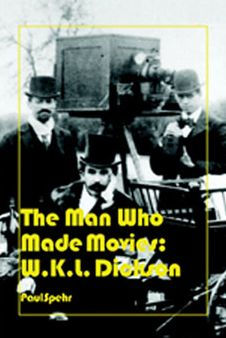The Man Who Made Movies: W.K.L. Dickson
W.K.L. Dickson was Thomas Edison's assistant in charge of the experimentation that led to the Kinetoscope and Kinetograph—the first commercially successful moving image machines. In 1891–1892, he established what we know today as the 35mm format. Dickson also designed the Black Maria film studio and facilities to develop and print film, and supervised production of more than 100 films for Edison. After leaving Edison, he became a founding member of the American Mutoscope Company, which later became the American Mutoscope & Biograph, then Biograph. In 1897, he went to England to set up the European branch of the company. Over the course of his career, Dickson made between 500 and 700 films, which are studied today by scholars of the early cinema. This well-illustrated book offers a window onto early film history from the perspective of Dickson's own oeuvre.
1112174621
The Man Who Made Movies: W.K.L. Dickson
W.K.L. Dickson was Thomas Edison's assistant in charge of the experimentation that led to the Kinetoscope and Kinetograph—the first commercially successful moving image machines. In 1891–1892, he established what we know today as the 35mm format. Dickson also designed the Black Maria film studio and facilities to develop and print film, and supervised production of more than 100 films for Edison. After leaving Edison, he became a founding member of the American Mutoscope Company, which later became the American Mutoscope & Biograph, then Biograph. In 1897, he went to England to set up the European branch of the company. Over the course of his career, Dickson made between 500 and 700 films, which are studied today by scholars of the early cinema. This well-illustrated book offers a window onto early film history from the perspective of Dickson's own oeuvre.
49.95
In Stock
5
1

The Man Who Made Movies: W.K.L. Dickson
650
The Man Who Made Movies: W.K.L. Dickson
650
49.95
In Stock

Product Details
| ISBN-13: | 9780861966950 |
|---|---|
| Publisher: | John Libbey Publishing |
| Publication date: | 11/17/2008 |
| Pages: | 650 |
| Product dimensions: | 6.30(w) x 9.20(h) x 1.50(d) |
| Age Range: | 216 - 3 Months |
About the Author
From the B&N Reads Blog
